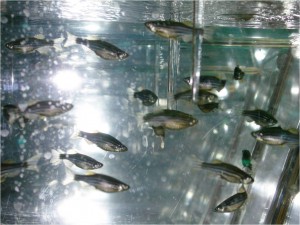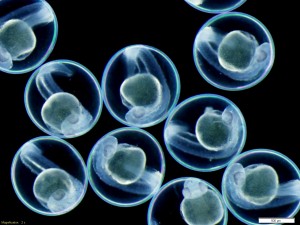 Scientists at Seattle Children’s Research Institute are using a unique species of fish to find out why some babies are born with heart malformations and how a defective heart might repair itself.
Scientists at Seattle Children’s Research Institute are using a unique species of fish to find out why some babies are born with heart malformations and how a defective heart might repair itself.
About one percent of U.S. babies are born with a heart defect, requiring medication, surgery or catheter procedures. While the condition is common, the cause is often unknown. Multiple genes are believed to contribute to heart malformations so genetic testing is difficult.
That’s where the minnow-sized zebrafish comes in. Zebrafish are ideal research subjects because they carry many of the same genes that are found in humans, including those that contribute to heart defects. Zebrafish also have transparent embryos that grow outside the mother, allowing scientists to easily observe their development.

Lead researcher Lisa Maves, PhD, helped establish a state-of-the-art aquatics facility for zebrafish at Seattle Children’s Research Institute in 2012 after she joined the Myocardial Regenerative Initiative, led by Mark Majesky, Ph.D. She is now engineering zebra fish with genetic mutations that mimic the mutations that cause human heart defects. She is closely monitoring the fish embryos, hunting for information on how these mutations affect the fish’s heart.
“I’m hopeful that this work will lead to better genetic testing for heart malformations,” Maves said.
Zebrafish also have an extraordinary ability to regenerate damaged or defective tissue. For example, if part of the fish’s heart is removed, it will grow back to be fully functional within weeks. Maves is studying the fish’s healing process to identify new, less invasive therapies for humans. One day, doctors may be able to instruct a child’s heart cells to build tissue to repair a defect by inserting new genes into the cells.
“Our research with zebrafish will not only help us understand how different genes cause heart defects but also how we might be able to fix them,” Maves said.

